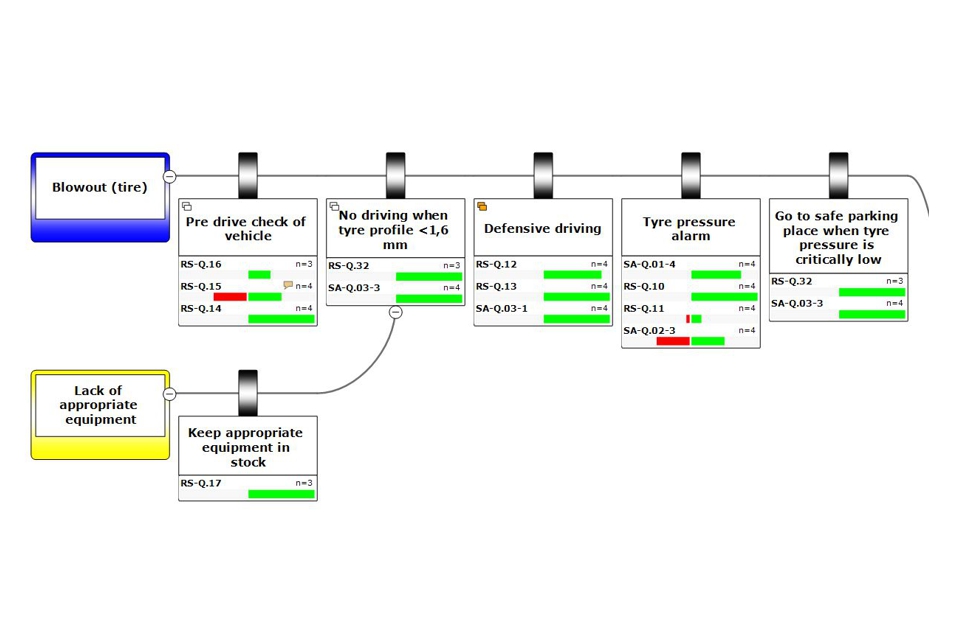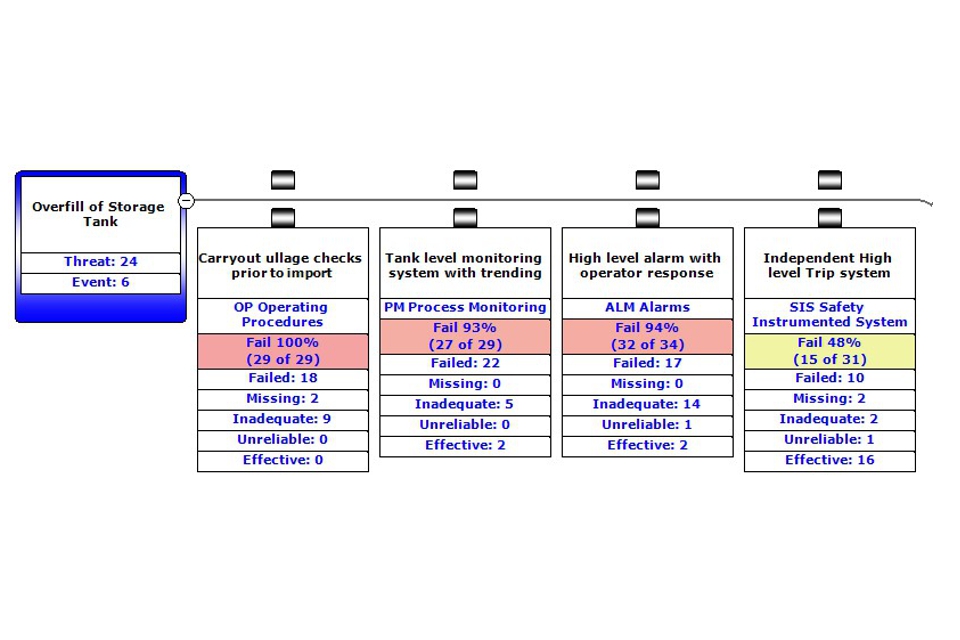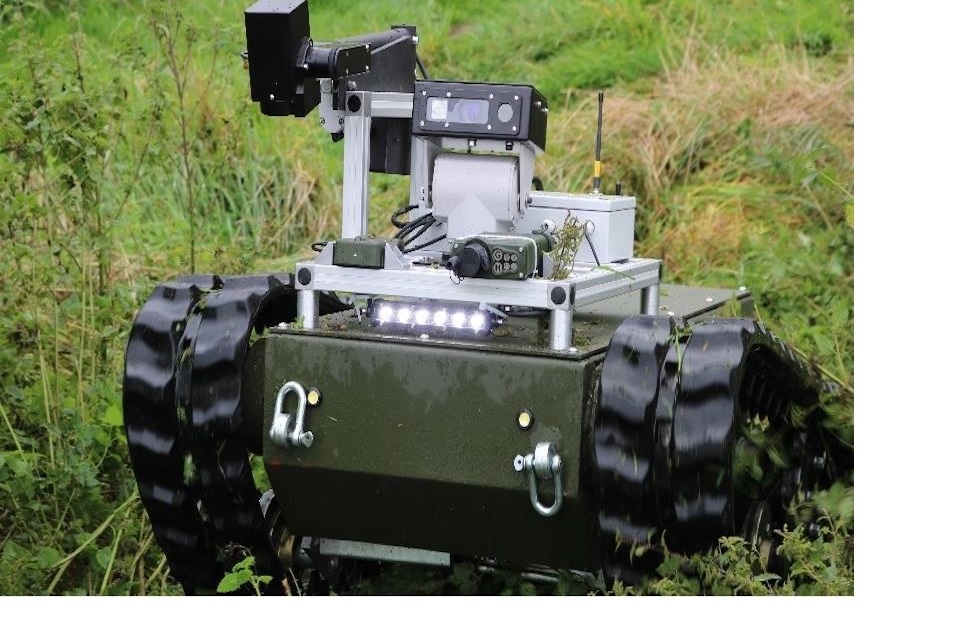I’m delighted to be here today. This Conference is always a major event. But this year it feels bigger and even more relevant than usual.
It’s not just the Conference’s status as a premier, if not the premier, international military event in Land Warfare. It’s the unique challenges of the times in which we live and work as military professionals and security experts.
An Era of Unprecedented Threats
We have heard a lot about threat over the past twenty-four hours and over the last year far greater military minds than mine have been publicly outlining their concerns.
The First Sea Lord, Sir Admiral Philip Jones, General Sir Nick Carter, as CGS, General Sir Gordon Messenger, our Vice Chief, and of course our former Chief of the Defence Staff. They all spoke not of potential threats that we could face at some undefined point in the future, but threats that we face now. I thought that Sir Stuart Peach spoke extremely candidly during his annual lecture at RUSI about the proximity of these threats, both in terms of time and space.
Of course, the cynic might see all this as some sort of a coordinated attempt to make a bid for more resource something that is, as you saw from Deborah Haynes’ question yesterday very much a hot topic, no less so than in the Lancaster Household. Being married as I am to a Health Minister can make for some interesting discussions! But to believe this would be to ignore the significance of a number of worrying global trends: resource scarcity, fragile states, rising populations, migration, regional tensions, trade disputes, hostile states. I could go on.
I believe that these threats are as acute now as they were in 1963 when RUSI made the bold decision to write to The Times warning the public of escalating dangers but to suggest that the threats we face now are the same as those that we faced during the Cold War would not only be irresponsible, but dangerous. To do so would be to risk strategic malaise.
Back then, things were more straightforward. Ideological divides were clearer, and what constituted war and peace was considered self-evident. But national security in the 21st Century doesn’t fit comfortably into those traditional boxes. It’s not just the range of dangers we’re facing but the breaking down of tradition boundaries, physical and virtual. Our adversaries have recognised this and they are adapting.
Spin the globe and look at the world from Russia’s perspective. Consider how they might view threats and whilst we don’t know whether they view conflict as inevitable, they are preparing. Some commentators have suggested that Russia’s use of proxy forces and hybrid methods suggest that they don’t intend to get their hands dirty.
There is an alternate thesis that Russia have concluded that they are not ready for major combat operations, that they have learnt the lessons from Georgia and the relative failure of their annexation of Crimea, and are now investing hard in the future of their conventional forces.
On this basis, it is a myth to think that Russia won’t use hard power at some point in the future. Fires and mass remain central to their way of warfare. You only have to look at Syria to see this in action, in what has become a testing ground for the integration of Russian land, maritime and air capabilities. Russia has at the same time been carving out an advantage in the sub threshold environment using cyber and hybrid methods to cause disruption and to obfuscate.
With a new appetite for risk, and a new determination not to be bound by the rules of the international order, information is being weaponised to sow confusion and create tensions. Tensions that in turn create divisions and opportunities that they can exploit. The ‘cracks’ to which the CGS referred yesterday. In this anarchic ungoverned space, they are calibrating their activity to understand where the threshold for international response sits. This introduces dangers of escalation and miscalculation.
Tensions once grew slowly, providing us with advance warning of potential conflict but we can’t rely on that any longer. We must be ready to respond, at very short notice, and in a wide variety of contexts. But of course Russia is not our only threat. We face a multitude of other challenges: hostile states, global extremist organisations, the rise of nationalism, political fragmentation, organised crime, terrorism and these threats have become so much more acute given the proliferation of sophisticated military hardware that was once the preserve of Tier 1 militaries.
But as we take forward our Modernising Defence Programme, the big question we’re asking today is what does “the new normal” mean for our Army? One thing we do know is that the land domain remains vital.
Essential Importance of Land Power
As Sir Mark Sedwill said yesterday, our primary imperative is the protection of our people and HMG’s interests, here and around the world but our rules based system is not self-sustaining and it is very much underwritten by hard power. Wars can be won and lost in the land environment, and it is with land forces that we will continue to confront aggression, seize hostile territory, hold it and deny its access to the enemy.
As we do that, the Division must remain the centre pillar to our Joint Force. A benchmark for a credible deterrent and war-fighting capability. The Division is where concurrent tactical actions in multiple domains are planned and co-ordinated, where long range area and precision weapons bring reach and influence and where we can look past the clutter of the close fight, using systems like Watchkeeper.
It is the Division which provides the umbrella of theatre missile and air defence systems along with offensive and defensive cyber and electronic warfare while aviation extends its scope for manoeuvre. And it is the Division which orchestrates the modern battlefield information system enabling the Joint Force, meshing decisive Special Operations Forces with cyber operations to achieve information advantage and assuring multi-national interoperability through its open system architecture.
Whilst every individual element has utility in its own right, it is the collective capability of the Division that gives it the ability to dislocate and overwhelm an opponent. It is the ability of the Division to be greater than the sum of its parts that will allow it to fight and increase the chances of victory. But to be truly successful we need to out think, anticipate, innovate and integrate.
21st Century Division – Innovative and Integrated
That’s why I’m very pleased to announce Exercise Autonomous Warrior, a radical new approach to securing operational advantage. Some of you may have seen the stand set up in the Hoare Memorial Room.
Later this year, a battlegroup from 1 Armoured Infantry Brigade will spend a month on Salisbury Plain, putting the most innovative ideas in Robotics and Autonomous Systems through their paces. They’ll work alongside the Royal Marines and the RAF Regiment, and will be joined by the US Army and observers from our other Allies.
The Army will be putting cutting-edge proposals from industry through their paces – over 70 new systems from 45 commercial partners. Ground-breaking innovations in A.I., unmanned autonomous vehicles, force protection and situational awareness will be tested to the limit in the toughest of simulated operational environments. This is partnership in action, the Army and wider Defence, industry and academia working together to get cutting edge technology to our front line.
This partnership is an illustration that our 21st Century Force won’t just be innovative with our kit, but integrated with our Whole Force: generalists and specialists; tank commanders and data analysts; industry and employers; and regulars and Reservists. Now, as a Reservist of some 30 years, the Reserve Forces are close to my heart. With Reserves Day next week, now is an opportune moment to reflect on the increased flexibility and the unique expertise that they add.
So, under the Modernising Defence Programme we’re looking carefully at our Reserve Forces, with the aim of enhancing national resilience by giving our Armed Forces even more flexibility. As part of that work, we will be testing our arrangements for mobilising large numbers of Reserves. But the need for agility goes beyond the work we do with Reservists and it must be about more than just a single Division.
It is also about the enablers from across the Army, without which the Division would be unable to function. Furthermore, our resilience is founded on our ability to generate a second, follow-on Division to meet the NATO demand signal providing vital wide-area security and stabilisation.
So, if we’re to out-think, out-fight, and out-manoeuvre our adversaries, we must continually invest in our Whole Force and that not only means across the Army, but more so than ever, from across the whole of Defence, and indeed the whole of Government. This is fusion.
Fighting and winning not only requires the masse of well-equipped conventional forces on the battlefield, but also the ability to dominate in the information environment, fighting in the virtual as well as physical space. Conflicts are not just won or lost on the battlefield but in the heads and hearts of the people and their leaders. Our adversaries believe that truth is malleable, that disinformation, the blurring of boundaries, and the creation of tension will together create an environment in which they can achieve their aims. We need to counter that to make sure the truth is heard.
Our Army knows it can’t afford to look in the rear-view mirror years down the line and wonder what our cyber deterrent might have been. That’s why we’re making our Division fully networked. We’re breaking down some of the silos that often divide our military hierarchies, dissolving cultural barriers between specialisms and embedding understanding of cyber and the other new domains into the very heart of our Divisional structures.
And we’re giving them the very highest quality of training and preparation. The Defence Cyber School at Shrivenham is already laying the foundations of the skills needed to operate on the modern battlefield and exercises such as Cyber Warrior have marked a step change in our collective capability.
We are already seeing this pay dividends on operations. For instance, during the fight against Daesh, our forces weren’t just training Iraqi and Kurdish troops in how to defuse bombs and build bridges. They weren’t simply using Typhoon and Tornado to destroy the extremist threat. Behind the scenes they were also countering and rebutting their false narrative. Showing the so-called caliphate for the hollow charade it really was. Tying our enemies in knots in the virtual world so we could destroy them in the real world.
21st Century Division – Internationally Responsive
Finally, the 21st century Division must be international by design. One of our greatest strengths is our network of allies and partners and it’s great to see so many of you represented here. At a time of global problems requiring international solutions, it’s vital that we continue working alongside you all. Whether it’s in NATO, providing reassurance to our Eastern European allies, whether it’s as part of the UN where the Army has been at the forefront of a commitment that has doubled in recent years or whether it’s as part of our Joint Expeditionary Force of nine like-minded nations, which recently trained together for the first time in Exercise Joint Warrior in Salisbury.
And just as we operate with multi-national groups, we are determined to keep expanding our bilateral alliances not just with our great friends the US, France and Germany but with other less traditional allies like Ukraine, Georgia and Lithuania, to name just three, where many of the significant “below threshold” challenges from our adversaries are directed.
Like many of our allies, we are committed to plans for the defence of Europe. To that end, we hold some forces, such as 16 Brigade, at very high readiness. The rest of our modernised war-fighting Division are able to follow on quickly behind where our agile new STRIKE brigades will make the most of AJAX and the Mechanised Infantry Vehicle. We’re looking hard at the effectiveness of our infrastructure in Germany – particularly vehicle storage, heavy transport and training facilities.
And, with our allies, we continually test our ability to deploy the combat mass we may well need at short notice. Besides our Enhanced Forward Presence in Estonia, we must also continue our investment in NATO’s international HQ, the Allied Rapid Reaction Corps. And we must build on the success of other initiatives such as the UK-German wide river crossing capability.
Most of all, we must test ourselves as near as possible for the demands of war. So, we can take immense heart from the success of the recent Warfighter exercise in the United States in which our 3rd Division performed credibly under the 18th Airborne Corps, fighting alongside the US 4th Infantry division, our successful exercises in Germany with a Danish Battle Group and the ongoing Combined Joint Expeditionary Force exercises with France.
However, the Army should not just be about reacting to events. In a more dangerous world we must do everything we can to strengthen the international rules-based-order and that means whilst preparing our forces for the worst case, being persistently engaged overseas, so that we can better anticipate threats, build our partners capacity to deal with them, to deter our adversaries and prevent conflict upstream. And perhaps most importantly we need to be clearer at all levels of Defence, across Government and within international alliances, about responsibilities and permissions, without which we risk strategic paralysis. I was particularly taken by Lord Hague’s comments yesterday about the need for a new Article 5B.
Conclusion – Whole Force
So, in this hybrid age we are making the 21st Division and Army a reality. One that is able to manoeuvre in the physical and virtual domain that is stronger than the sum of its parts, that is international by design, that is integrated into the Joint Force and that is fused with the rest of capability across government.
Above all, a force that will leave our adversaries and allies alike in no doubt whatsoever that the UK as it has always done retains the strength, the will and the skill to defend our nation, our values and our way of life.
Thank you.




